TNPOP Case Studies
Welcome to the case study section of the TnPOP website!
This section provides case studies from Tennessee water and wastewater treatment plants and systems that participated in the Energy Efficiency Partnership and/or the Nutrient Optimization Program through TDEC and provides a baseline for the kinds of results that your system could achieve by pursuing plant optimization.
Energy Efficiency Partnership Case Studies
The partnership conducted assessments of 41 water and wastewater facilities in Tennessee over a 5 year period.
For wastewater facilities implementing TDEC's low-to-no-cost recommendations:
-Average 19% reduction in annual energy costs
-Average 40% reduction in average nutrient discharge
Measured annual savings through 2015:
-Over 15,000,000 kWh saved Over
-$1,500,000 annual savings
-Over 13,000 tons annual CO2
Reduction Identified savings since 2016 (verification underway):
-$390,468 annual cost savings
-4,358,200 kWh/year savings
-95 tons/year nutrient reduction

In 2017, with support from its Mayor and Town Council, the Carthage Wastewater Treatment Plant agreed to participate in the Energy Efficiency Partnership. Carthage’s assessment was conducted in March 2017 by the University of Memphis and the University of Tennessee Municipal Technical Advisory Service. After assessment, Carthage implemented a number of low-to-no-cost measures resulting in a 19% energy reduction and a 19% cost reduction for energy with an annual energy savings of more than 85,000 kWh/year. READ MORE
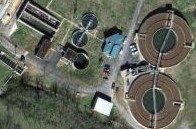
In 2011 the Fayetteville Public Utilities Wastewater Plant agreed to participate in the Energy Efficiency Partnership and realized significant energy savings, cost savings, CO2 reduction, and reduction by 50% of Total Nitrogen. READ MORE

In 2017, Lawrenceburg Utility Systems Wastewater Treatment Plant joined the Energy Efficiency Partnership. After a site assessment in March of 2017, Lawrenceburg began implementing changes to operation and – with $0 capital expenditure – is experiencing a 22% improvement in electricity cost and 26% improvement in electricity used resulting in annual cost savings of greater than $21,000 in electricity costs alone. These savings are particularly important as loading at the plant has increased by 13% over this period, which would have resulted in additional energy costs without the optimization.
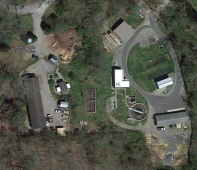
Beginning in 2016, Norris Water Commission took the initiative to learn and pursue innovative low-cost approaches to optimizing water quality and reducing energy consumption through voluntary participation in TDEC's Wastewater Nutrient Plant Optimization Project. Norris has continued using techniques learned through its participation to achieve significant environmental and operational savings, including cost savings; nitrogen and phosphorus removal prior to discharge to surface waters; reduced electricity consumption; and production of less sludge. Norris reduced their average monthly kilowatt-hour usage by 17.6%, total phosphorus in the effluent decreased by 25%, and total nitrogen decreased by 84%.

Beginning in 2016, the Harriman Wastewater Treatment Plant took initiative to learn and pursue innovative low-cost approaches to optimizing water quality and reducing energy consumption at its aging wastewater treatment plant through voluntary participation in TDEC's Wastewater Nutrient Plant Optimization Project. Harriman has continued using techniques learned through its participation to achieve significant environmental and operational savings, including cost savings; nitrogen and phosphorus removal prior to discharge to surface waters; reduced electricity consumption; and improved biological treatment. A few years before additional changes were made (in 2020), energy and nutrient data was collected and used as a baseline (monthly averages August 2017 – July 2019) for this case study.
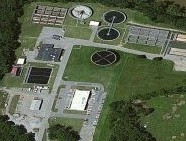
In 2011, the City of Columbia Mayor Dean Dickey accepted the invitation to take part in the Energy Efficiency Partnership. Assessment by Partnership partners lead to recommendations for reduction of aeration and modified UV control. With $0 capital investment outlay, the plant is experiencing a 24% reduction in overall energy use and annual energy cost savings of $160,000. READ MORE
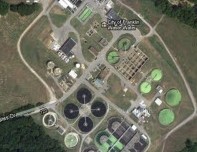
The City of Franklin’s Water Reclamation Facility (WRF) was also an early participant in the Energy Efficiency Partnership, joining the partnership in its first year – 2011. Unlike other participants, Franklin focused its efforts on its Water Reclamation Facility, rather than its wastewater treatment facility. Nevertheless, assessment by the partnership identified a number of options for energy and process savings resulting in annual cost savings of more than $200,000, a reduction in CO2 emissions of 1835 tons per year, and annual energy savings of more than 13%. READ MORE
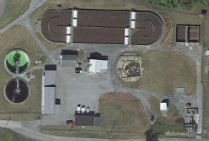
In 2016, staff from Church Hill, TN wastewater treatment plant were invited to participate in the Tennessee Water and Wastewater Energy Efficiency Partnership. Over the past five years, the city and plant staff worked diligently to reduce nitrogen loading to the Holston River by 35,800 tons/year. Through these efforts, they have also seen annual energy savings of 310,000 kWh/year and annual cost savings of approximately $26,000 per year.
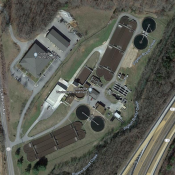
In 2015, the Cookeville Wastewater Treatment Plant began participation in TDEC's Wastewater Nutrient Plant Optimization Project. Cookeville has continued using techniques learned through its participation to achieve significant environmental and operational savings, including cost savings; nitrogen and phosphorus removal prior to discharge to surface waters; reduced electricity consumption; and production of less sludge. In January 2014, Cookeville Wastewater Treatment staff were trained on nutrient reduction while reducing energy consumption. The process developed for this facility involved using less aeration equipment. By reducing the use of aeration equipment, Cookeville Wastewater Treatment Facility reduced their average monthly kilowatt-hour usage by 40.1%. This change alone reduced the facility’s energy costs by 36% during the same period of time that the cost of electricity increased by 7.7%.
Links to other success stories:
- 2022 Final Report Oneida and McMinnville
- Divide and Conquer Describes This Facility's Approach to Reducing Nitrogen and Phosphorus
- Through a Decade of Effort, Murfreesboro Wins Dramatic Effluent Nitrogen and Phosphorus Reductions
- 2015 UCDD Final Report - Athens Supplement
- The Tennessee Story - Optimizing Nutrient Removal at Municipal Wastewater Facilities
- Cowan, TN Final Report
- Harriman, TN Final Report
From 2015 to 2016, TDEC’s Division of Water Resources contracted with CleanWaterOps to train and provide on-site technical support to Tennessee municipal wastewater facilities.
As a result of training, assessments, and low-to-no-cost operational changes, the eighteen facilities that participated (thirteen as part of the formal program and an additional six through advisory capacity only) realized significant O&M savings and more sustainable treatment as well as improved nitrogen and phosphorous removal.
More Information:


